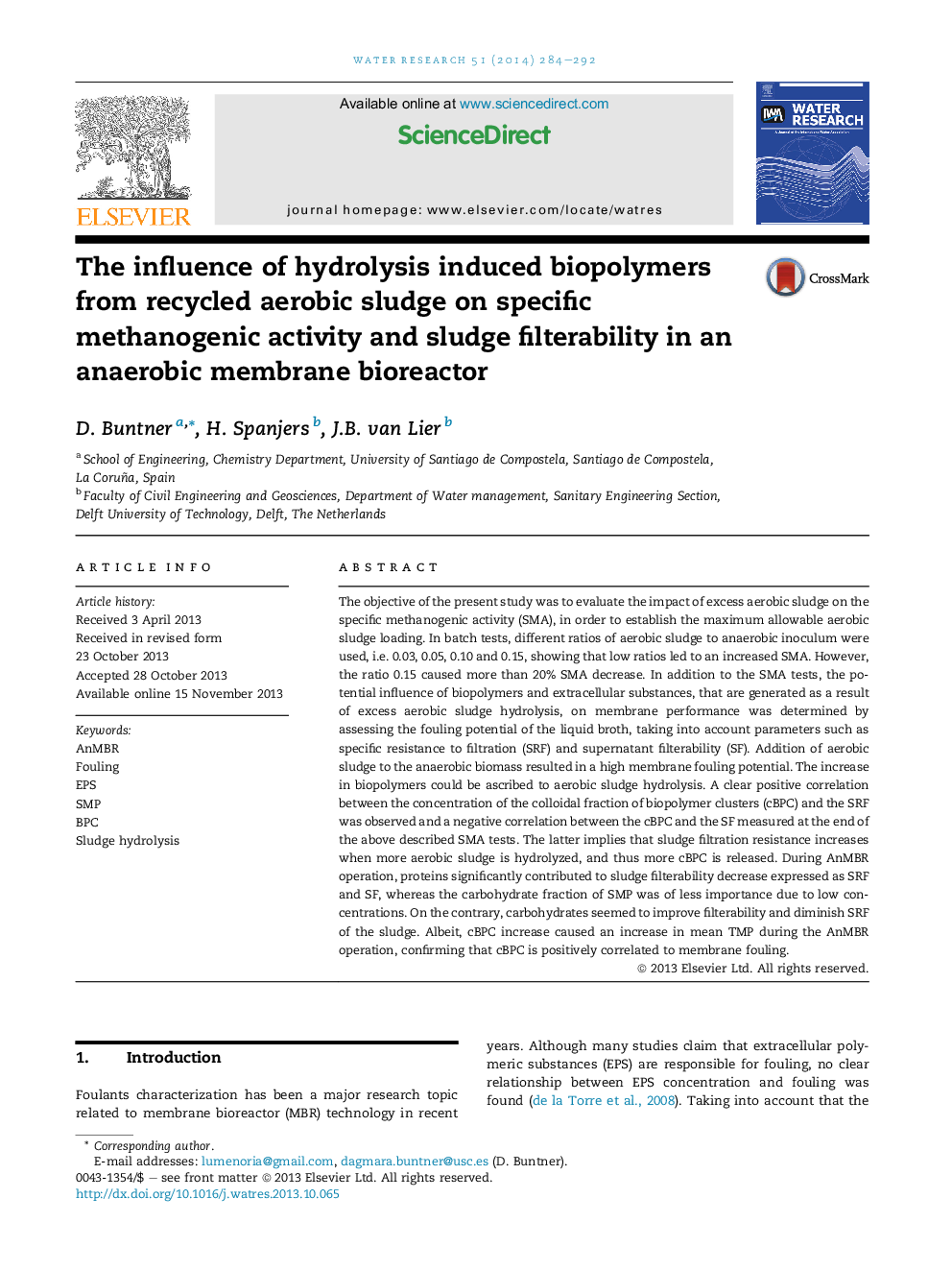| کد مقاله | کد نشریه | سال انتشار | مقاله انگلیسی | نسخه تمام متن |
|---|---|---|---|---|
| 4481650 | 1623117 | 2014 | 9 صفحه PDF | دانلود رایگان |
• Aerobic sludge hydrolysis results in increased cBPC, EPS and SMP concentrations.
• Increase in cBPC is positively correlated to SFR, and negatively correlated to SF.
• Due to its simplicity cBPC might be a fouling indicator of interest.
• In AnMBR proteins significantly contributed to sludge filterability decrease.
• In AnMBR carbohydrates positively correlated to SF and inversely correlated to SFR.
The objective of the present study was to evaluate the impact of excess aerobic sludge on the specific methanogenic activity (SMA), in order to establish the maximum allowable aerobic sludge loading. In batch tests, different ratios of aerobic sludge to anaerobic inoculum were used, i.e. 0.03, 0.05, 0.10 and 0.15, showing that low ratios led to an increased SMA. However, the ratio 0.15 caused more than 20% SMA decrease. In addition to the SMA tests, the potential influence of biopolymers and extracellular substances, that are generated as a result of excess aerobic sludge hydrolysis, on membrane performance was determined by assessing the fouling potential of the liquid broth, taking into account parameters such as specific resistance to filtration (SRF) and supernatant filterability (SF). Addition of aerobic sludge to the anaerobic biomass resulted in a high membrane fouling potential. The increase in biopolymers could be ascribed to aerobic sludge hydrolysis. A clear positive correlation between the concentration of the colloidal fraction of biopolymer clusters (cBPC) and the SRF was observed and a negative correlation between the cBPC and the SF measured at the end of the above described SMA tests. The latter implies that sludge filtration resistance increases when more aerobic sludge is hydrolyzed, and thus more cBPC is released. During AnMBR operation, proteins significantly contributed to sludge filterability decrease expressed as SRF and SF, whereas the carbohydrate fraction of SMP was of less importance due to low concentrations. On the contrary, carbohydrates seemed to improve filterability and diminish SRF of the sludge. Albeit, cBPC increase caused an increase in mean TMP during the AnMBR operation, confirming that cBPC is positively correlated to membrane fouling.
Journal: Water Research - Volume 51, 15 March 2014, Pages 284–292
